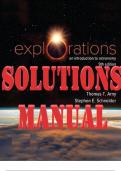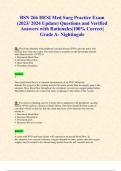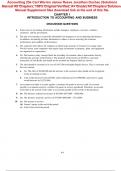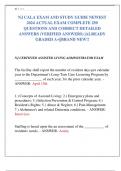Exam (elaborations)
Explorations: Introduction to Astronomy 9th Edition by Thomas Arny & Stephen Schneider | SOLUTIONS MANUAL (Complete 18 Chapters).
Explorations: Introduction to Astronomy 9th Edition by Thomas Arny & Stephen Schneider. ISBN 9896. SOLUTIONS MANUAL. TABLE OF CONTENTS: Preview: The Cosmic Landscape Chapter 1: The Cycles o f the Sky Chapter 2: The Rise of Astronomy Essay 1: Backyard Astronomy Chapter 3: Gravity and Motion Chapter ...
[Show more]












